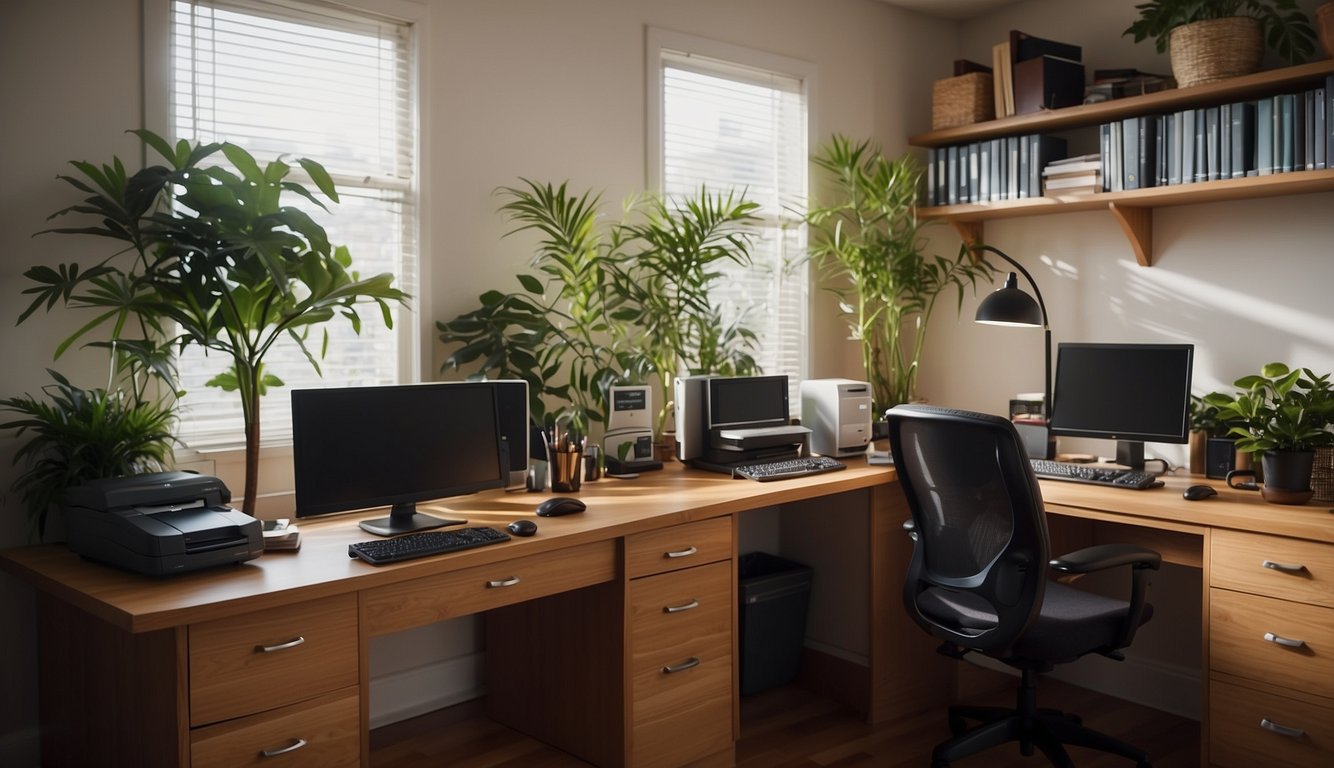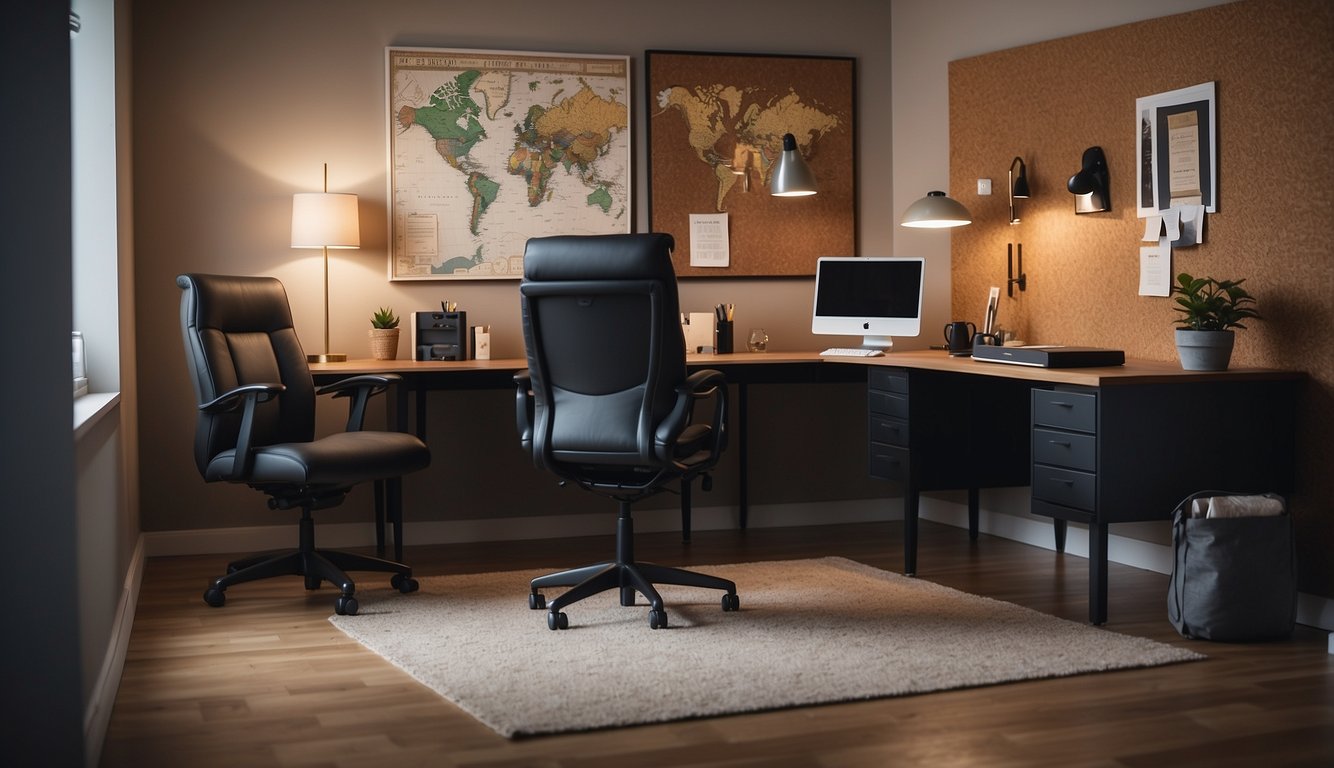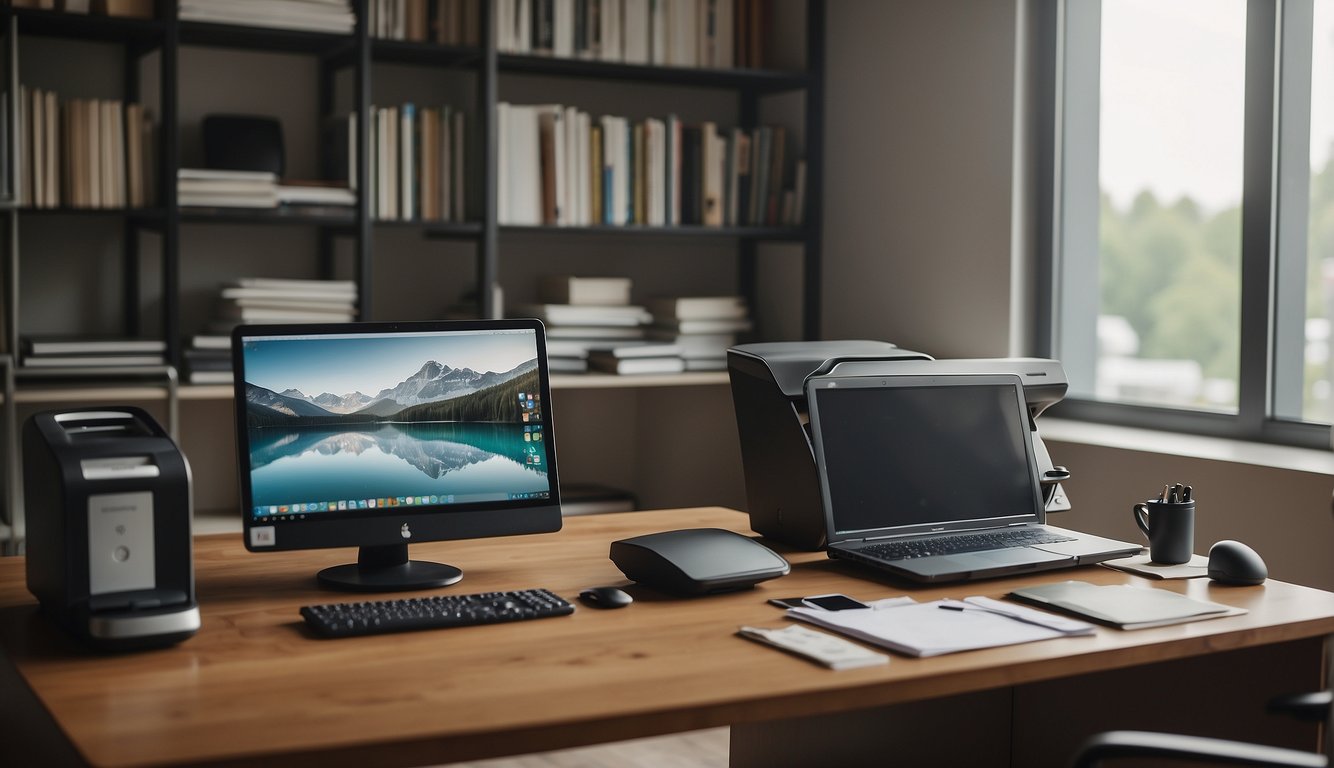10 Tips for Creating a Shared Home Office Space that Works for Everyone
As more people embrace the flexibility of remote work, the need for a dedicated workspace within the home has never been greater. For homeowners and families, this often means creating a shared home office that caters to various needs and work styles.
A well-designed shared office can be the key to maintaining productivity and harmony at home. Whether you’re sharing the space with a partner, children, or roommates, these tips will help you create a functional and collaborative environment.
1. Define the Space
Why it’s important: Having a clearly defined office space helps separate work from personal life, allowing individuals to focus when it’s time to work and relax when it’s not. It also helps in setting physical boundaries that can be respected by all family members.
Practical tips:
- Choose a quiet corner of the house that is less frequented by family members during work hours.
- If you don’t have a separate room, use area rugs or furniture arrangements to visually demarcate the office space from the rest of the room.
- Consider soundproofing solutions like acoustic panels or a white noise machine to minimize auditory distractions. There are also door options such as the BA-ACF-2064 Flush Steel Acoustical Access Door from Best Access Doors.

2. Assess Individual Needs
Why it’s important: A shared home office must cater to the different tasks and work habits of its users. Some may need dual monitors for their work, while others might require a large desk for drawing or crafting. Understanding and accommodating these needs will ensure that everyone can work effectively.
Practical tips:
- Create a comprehensive list by asking each person what tools and equipment they need to do their job effectively.
- Discuss and plan for shared resources, like printers or monitors, and ensure they are easily accessible to all.
- Allow each person to express their storage needs, whether it’s shelving for books or drawers for supplies, and incorporate these into the office design.
By starting with these foundational steps, you’re on your way to creating a shared home office that not only functions well for everyone’s work but also feels like a cohesive part of your home.

3. Invest in Ergonomic Furniture
Why it’s important: Comfort is key in any workspace, and even more so in a shared environment. Ergonomic furniture can prevent discomfort and injury over long periods of use, making it essential for maintaining productivity and health.
Practical tips:
- Select chairs that offer lumbar support and are height adjustable to accommodate different users.
- Choose desks that can be adjusted for standing or sitting to encourage movement and flexibility throughout the workday.
- Consider footrests, wrist supports, and monitor stands to enhance comfort and ergonomic posture for every user.

4. Optimize Storage Solutions
Why it’s important: In a shared office space, organization is crucial to prevent clutter and ensure that each person has access to what they need without disrupting others.
Practical tips:
- Utilize vertical space with shelving units or hanging file systems to maximize floor space.
- Invest in shared filing cabinets or drawer units that can be labeled and divided for personal use.
- Encourage the use of desk organizers to keep everyday tools handy and workspace surfaces clear.
5. Ensure Sufficient Lighting
Why it’s important: Proper lighting can greatly affect one’s ability to focus and work efficiently. It can also reduce eye strain and create a more inviting work environment.
Practical tips:
- Position the shared workspace to take advantage of natural light during the day.
- Supplement with adjustable desk lamps or overhead lighting that can be controlled for individual work areas.
- Consider the use of light-filtering or blackout shades to manage glare and adjust the amount of natural light based on the time of day and personal preference.
By incorporating ergonomic furniture, smart storage, and adequate lighting, your shared home office will be well on its way to becoming a space where everyone can thrive. These elements are the building blocks of a functional and comfortable environment that promotes productivity and well-being.

6. Incorporate Technology Thoughtfully
Why it’s important: In today’s digital age, technology is a fundamental part of any workspace. However, when not integrated carefully, it can lead to a tangle of wires and a cluttered environment that hampers productivity and increases stress.
Practical tips:
- Ensure there are enough electrical outlets to support all the tech devices without having to unplug something every time you need to charge.
- Use cable management solutions like cord organizers, clips, or conduits to keep wires neat and out of the way.
- Consider setting up a shared printer or scanner in a centralized location to avoid duplication and save space.
7. Create Visual Privacy
Why it’s important: While collaboration is important, so is the ability to focus without visual distractions. Creating visual privacy helps define personal workspace within the shared environment, allowing for concentration and individual productivity.
Practical tips:
- Use bookshelves, filing cabinets, or plants to create natural dividers between workstations.
- Install frosted glass partitions or use decorative screens that can be easily moved or repositioned as needed.
- Encourage the use of personal headphones for private audio space and to signal when someone is in focus mode and should not be disturbed.
8. Establish Ground Rules
Why it’s important: A shared home office functions best when there’s a mutual understanding of how the space should be used. Ground rules help manage expectations, respect each other’s time, and maintain a professional atmosphere.
Practical tips:
- Have a family meeting or discussion with all users of the space to agree on guidelines for noise levels, meeting times, and shared equipment use.
- Create a schedule for shared resources, like the printer or desk space, to ensure everyone has access when they need it.
- Set up a cleaning rota to keep the shared space tidy and organized, making it a more pleasant environment for everyone.
By thoughtfully incorporating technology, creating visual privacy, and establishing ground rules, you can ensure that your shared home office is a place of productivity and respect. These elements are key to maintaining a functional and cooperative shared workspace.

9. Personalize with Flexibility
Why it’s important: Personalization can make a shared office space feel more comfortable and inviting, which can boost morale and productivity. However, it’s important to balance personal touches with the shared nature of the space.
Practical tips:
- Allow each person to have a small area where they can display personal items, like photos or trinkets, that don’t overwhelm the shared aesthetic.
- Choose decorations and accessories that can be easily changed or moved, such as magnetic boards, pinboards, or modular shelving units.
- Encourage the use of personal laptop stands, keyboard trays, or desk organizers that can be set up and removed as needed to maintain individual comfort without permanently altering the shared space.
10. Regularly Reassess the Space
Why it’s important: Over time, the needs of the individuals using the shared home office may change. Regular reassessments ensure that the space continues to serve everyone well and adapts to evolving work habits and requirements.
Practical tips:
- Schedule a quarterly review of the office space to discuss what’s working and what isn’t, and make adjustments accordingly.
- Be open to rearranging furniture, upgrading equipment, or swapping out storage solutions to improve functionality and comfort.
- Encourage ongoing communication between all users of the space to address any issues or needs as they arise.
Conclusion
Creating a shared home office space that works for everyone involves careful planning and consideration of individual needs. By following these 10 tips, homeowners and families can design a space that promotes productivity, comfort, and collaboration. Remember to maintain flexibility and open communication to ensure that your shared home office continues to meet the needs of its users. With the right approach, your shared workspace can be a hub of creativity and efficiency that benefits the entire household.
Let Us Know How We’re Doing!
Did this expertly prepared resource answer your question?
Do you have another question about home maintenance, home improvement projects, home appliance repair, or something else?
Get more information, send in questions and keep the discussion going by contacting the I’ll Just Fix It Myself company customer service team at at 1-800-928-1490 or Email us at [email protected]
